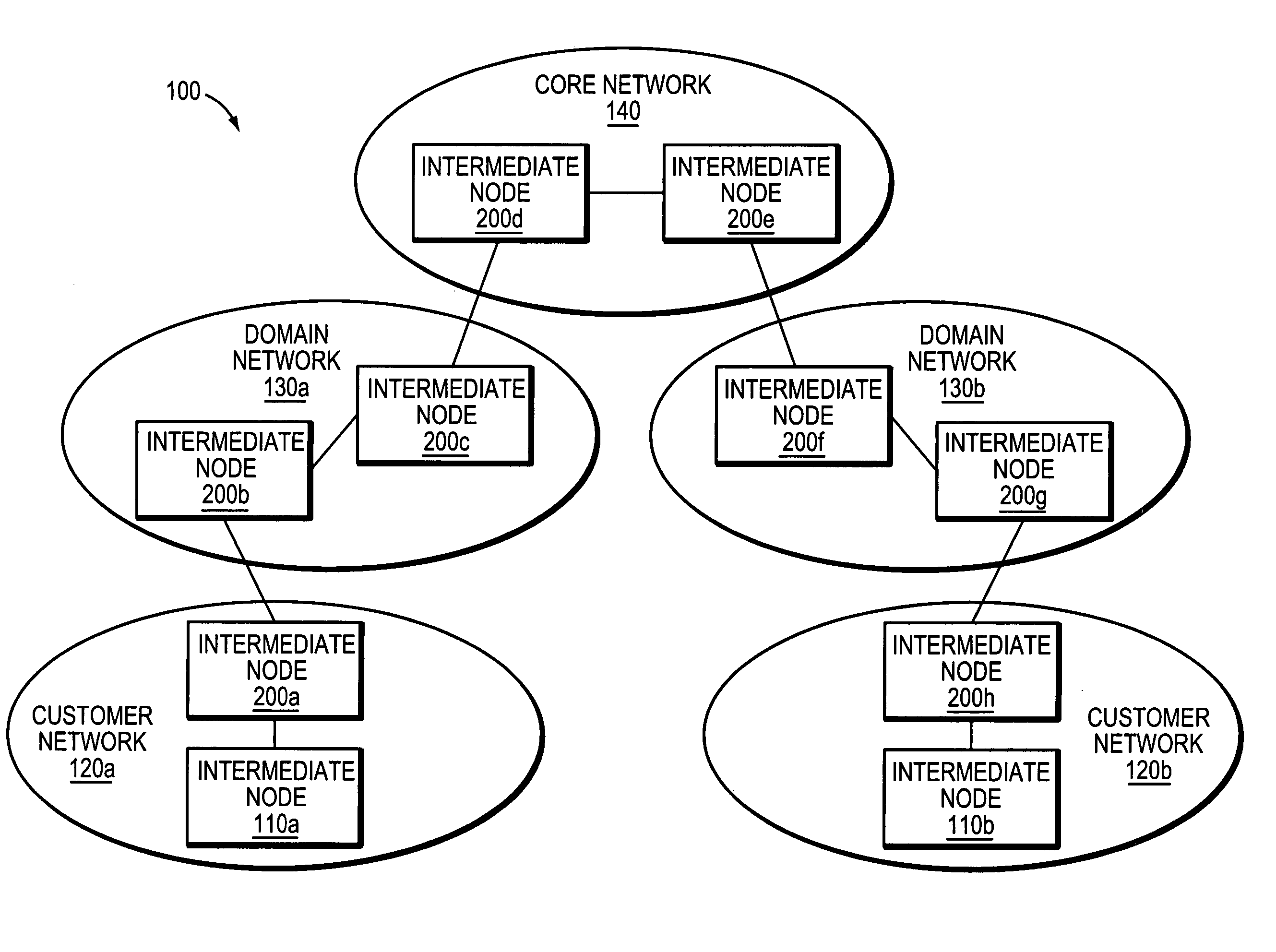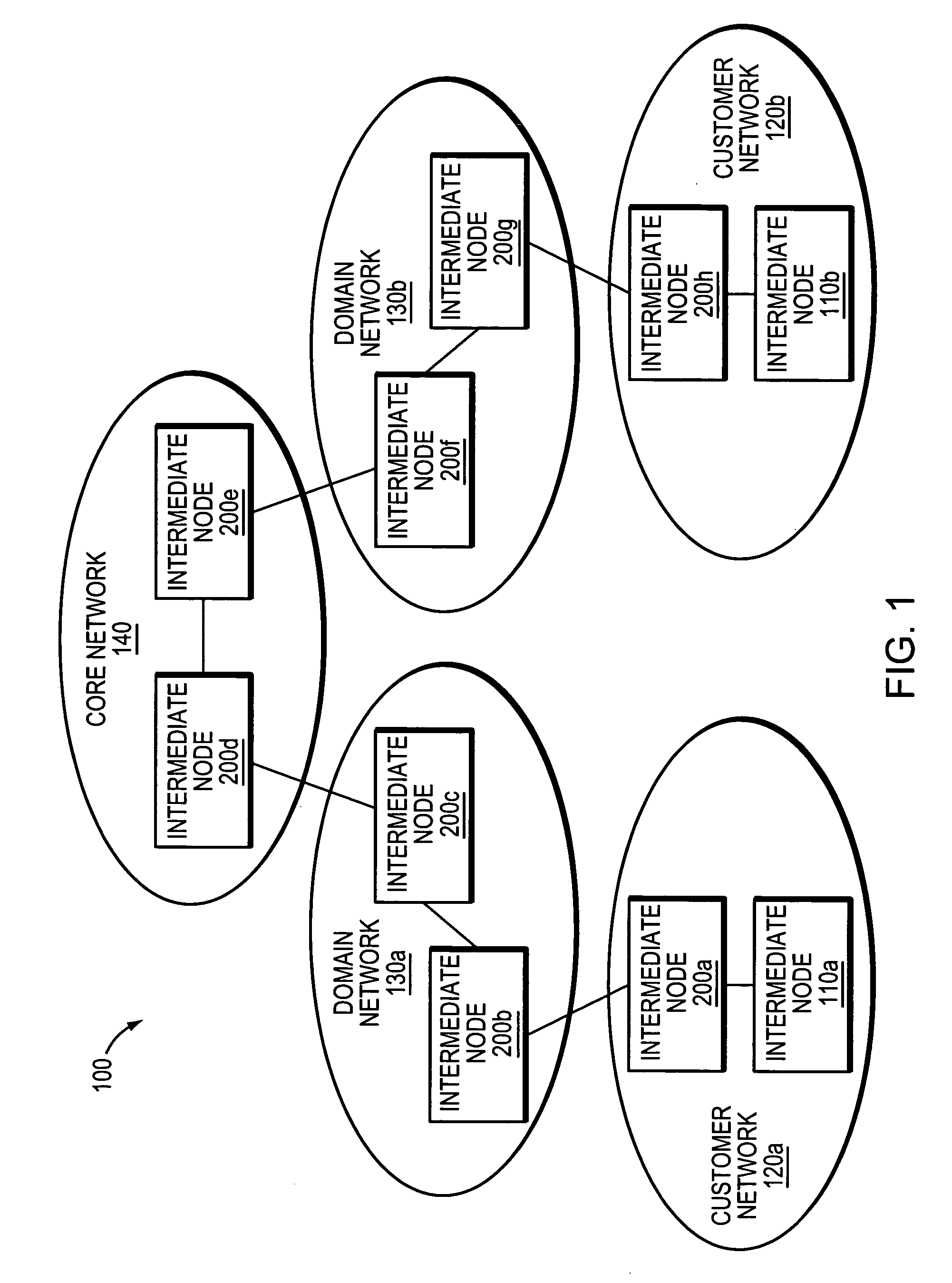Scaling VLANs in a data network
a virtual local area network and data network technology, applied in the field of data network scaling, can solve the problems of forming circuitous paths or “loops” within the network, limiting so as to achieve the effect of reducing the number of ethernet lans and reducing the size of the ethernet lan
- Summary
- Abstract
- Description
- Claims
- Application Information
AI Technical Summary
Benefits of technology
Problems solved by technology
Method used
Image
Examples
Embodiment Construction
[0055]FIG. 1 is a schematic block diagram of a data network 100 that may be advantageously used with the present invention. The data network 100 comprises a collection of communication (data) links connected to a plurality of network entities, such as end nodes 110 and intermediate nodes 200 to form an internetwork of nodes. These internetworked nodes communicate by exchanging data packets according to a predefined set of protocols, such as the Transmission Control Protocol / Internet Protocol (TCP / IP) and the Internetwork Packet eXchange (IPX) protocol. A protocol, as used herein, is a set of formal rules describing how to transfer data between two entities in a data network.
[0056] Specifically, network 100 comprises various interconnected “sub-networks” including customer networks 120a-b, domain networks 130a-b and a core network 140. The customer networks 120a-b contain various nodes, including intermediate nodes 200a, 200h and end nodes 110a-b, which may reside at different sites...
PUM
 Login to View More
Login to View More Abstract
Description
Claims
Application Information
 Login to View More
Login to View More - R&D
- Intellectual Property
- Life Sciences
- Materials
- Tech Scout
- Unparalleled Data Quality
- Higher Quality Content
- 60% Fewer Hallucinations
Browse by: Latest US Patents, China's latest patents, Technical Efficacy Thesaurus, Application Domain, Technology Topic, Popular Technical Reports.
© 2025 PatSnap. All rights reserved.Legal|Privacy policy|Modern Slavery Act Transparency Statement|Sitemap|About US| Contact US: help@patsnap.com



